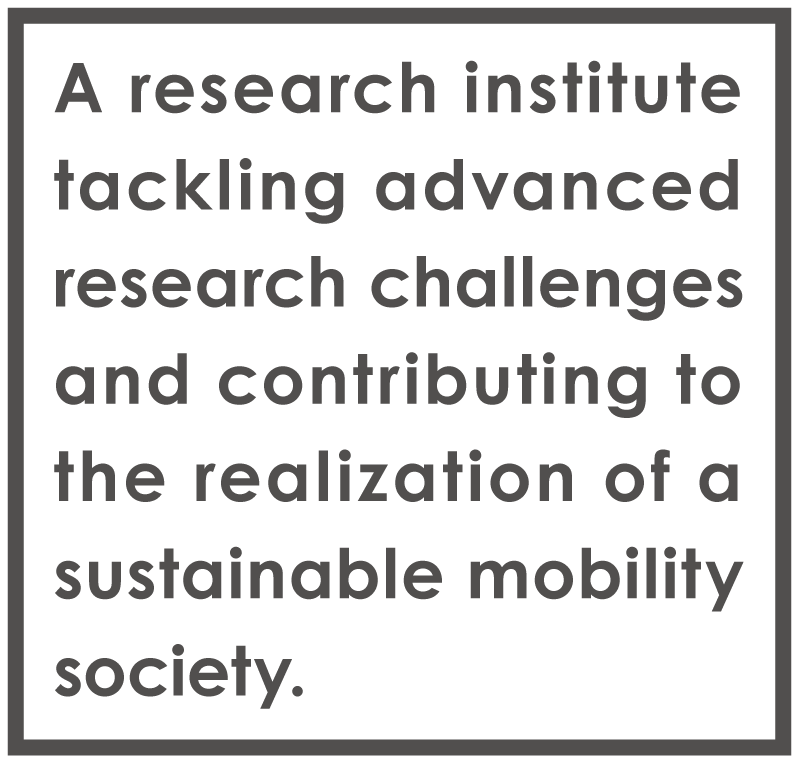Toyota Transportation Research Institute will promote transportation-based community development advanced through collaboration between citizens, companies and municipalities and tackle the vital issues the current age presents us with.
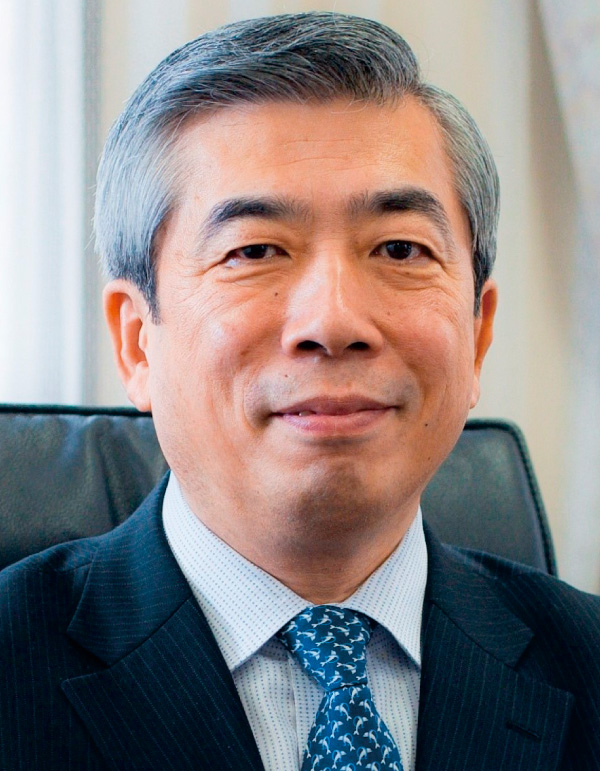 Toyota Transportation Research Institute Vice Chairman and Director General
Toyota Transportation Research Institute Vice Chairman and Director GeneralNoboru Harata
Since its establishment in 1991, our institute has taken great steps forward as a research institute, and has published its research articles to academic societies in Japan and beyond, as well as making wide-ranging contributions to the solution of issues facing transportation in local cities including Toyota City. As the third Director General of our institute, I am committed to improving these activities and strengthening collaborative relationships across many fields.
The environment surrounding transportation is about to experience a significant change. Innovative mobility services including self-driving vehicles, new-energy cars and sharing are materializing as social technologies that impact people’s lives.
We need to think about how to utilize these social technologies in local areas where the population is declining as it ages. Toyota Transportation Research Institute will promote transportation-based community development advanced through collaboration between citizens, companies and municipalities and tackle the vital issues the current age presents us with, in order to contribute to the realization of a sustainable mobility society.
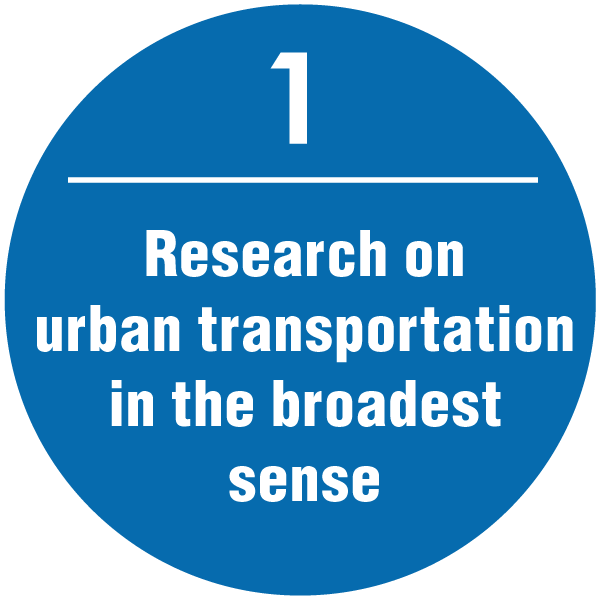
Through academic research that focuses not only on matters directly pertaining to transportation, but also considers “urban traffic and transportation” more broadly with reference to regional and urban development, our institute makes proposals for how cities can be safe, smooth and comfortable to live in. We also place importance on the relationship between “people” and “vehicles”, and hope to accommodate the needs of the times through research on desirable transportation environments.
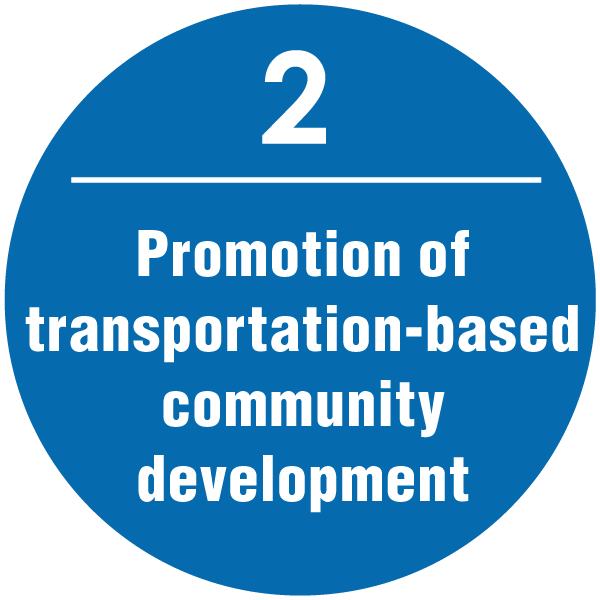
Transportation is an essential element that supports people’s social lives. Therefore, planning and policy development regarding transportation must be worked on jointly with community development (development of material social infrastructure as well as formation of psychological community). In light hereof, we contribute to the realization of rich social lives by conducting practical research that contributes to “transportation-based community development” which helps achieve “community development” from the viewpoint of transport, as well as by reflecting the research outcomes in transport policies through close collaboration with governmental bodies.
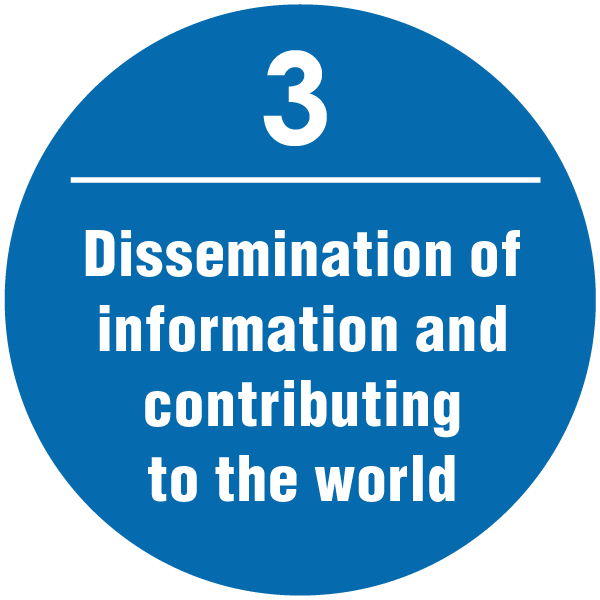
As the role Japan plays on the world stage increases in prominence, it is also being required to contribute to the world in terms of developing transportation environments suited to urban cities. Taking Toyota City as its place of research and experiment, our institute disseminates information on these outcomes widely in Japan and to the world, and contributes to improving transportation environments in cities around the world.
Basic Stance
A research institute tackling advanced research challenges and contributing to the realization of a sustainable mobility society.

| Name | Toyota Transportation Research Institute |
|---|---|
| Established | March 1, 1991 |
| Basic funding | 3 billion yen |
| Chairman of the Board of Directors | Toshihiko Ohta |
| Christian era | |
|---|---|
| 2018 | In 2017, the “New Mid-term Vision”, a 5-year plan from FY2018 was developed. In 2018, Noboru Harata (professor at the School of Engineering, the University of Tokyo) was appointed to the role of Director General. |
| 2017 | |
| 2016 | In 2015, Shinichi Imaeda (seconded from Toyota Motor Corporation) was appointed to the role of Executive Director. |
| 2015 | |
| 2014 | In 2013, the office was relocated to the 4th floor of Toyota City Hall Motoshiro Government Building. |
| 2013 | |
| 2012 | In 2012, Toshihiko Ohta, the mayor of Toyota City, was appointed to the role of Chairman of the Board of Directors. |
| 2011 | |
| 2010 | In 2010, our Institute was authorized as a public interest incorporated foundation. |
| 2009 | In 2009, Masaji Kasamatsu (seconded from Toyota Motor Corporation) was appointed to the role of Executive Director. |
| 2008 | A three-party committee to review the running of our Institute was established in 2007 involving Toyota City, Toyota Motor Corporation and our Institute, and the “Mid-term Vision”, a 10-year plan from FY2009 was developed |
| 2007 | |
| 2006 | The number of researchers was increased by two in FY2006 to promote transportation-based community development of Toyota City, expanding the research fields and enhancing independent research, consigned research and survey projects, etc. In 2006, Kiyoshi Murai (seconded from Toyota Motor Corporation) was appointed to the role of Executive Director. |
| 2005 | |
| 2004 | In 2003, Katsutoshi Ohta (emeritus professor at the University of Tokyo) was appointed to the role of Director General, and Tetsuo Matsunaga (seconded from Toyota Motor Corporation) to that of Executive Director. In 2004, the office was relocated to the 1st floor of TM Wakamiya Parking (Wakamiya-cho). In April of the same year, Ryosuke Ando (current Director of the Research Department) was appointed to the role of Research Chief. |
| 2003 | |
| 2002 | For the first time, our Institute invited engineers from a construction consultancy firm to join in order to strengthen our Institute’s capability to deal with consigned research projects. |
| 2001 | |
| 2000 | Kohei Suzuki (then-mayor of Toyota City) was appointed to the role of Chairman of the Board of Directors in 2000. |
| 1999 | |
| 1998 | Employees with doctorate degrees were recruited in 1998 to enhance the levels of in-house research personnel. The basic funding became 3 billion yen. |
| 1997 | |
| 1996 | Koji Izuhara (current visiting professor at Aichi Institute of Technology) was appointed to the role of Director of Research Planning Department. |
| 1995 | |
| 1994 | In 1993, Hiroshi Komaki (seconded from Toyota Motor Corporation) was appointed as the first Executive Director. The number of researchers was increased (the secondment of one more person from the City, and the new recruitment of in-house personnel who graduated from urban transportation planning-related laboratories). |
| 1993 | |
| 1992 | March 1991, our institute was established at Nakane Nissei Building (Nishi-machi, Toyota City). Masaichi Kato (then-mayor of Toyota City) was appointed to the role of Chairman of the Board of Directors, and Yoji Niitani (emeritus professor at the University of Tokyo) to the role of Director General. Our Institute was run by secondees from Aichi Prefecture, Toyota City, Toyota Motor Corporation and non-life insurance companies. The basic funding was 2.07 billion yen. |
| 1991 |





